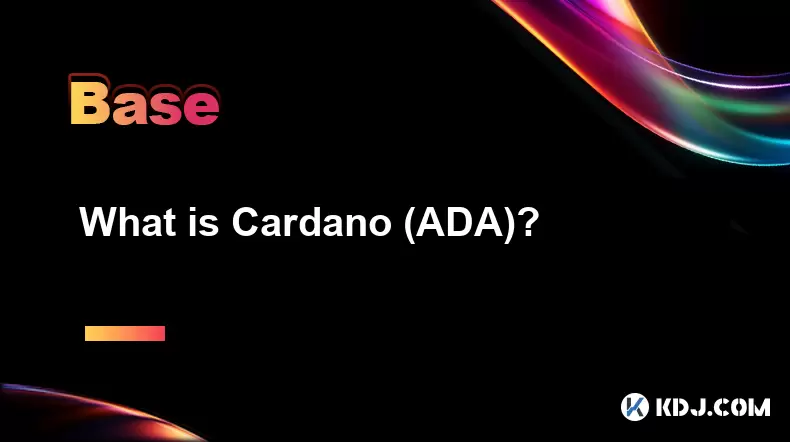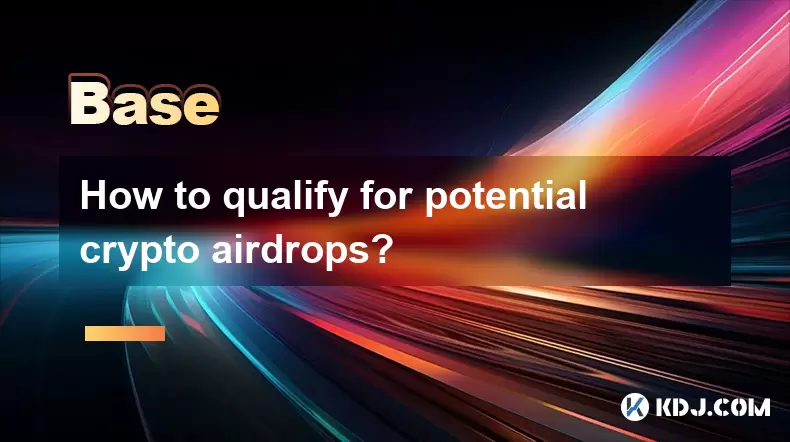-
 Bitcoin
Bitcoin $119100
-0.65% -
 Ethereum
Ethereum $3642
-2.73% -
 XRP
XRP $3.223
-8.59% -
 Tether USDt
Tether USDt $1.000
0.00% -
 BNB
BNB $782.1
-2.51% -
 Solana
Solana $190.7
-6.75% -
 USDC
USDC $0.0000
0.01% -
 Dogecoin
Dogecoin $0.2443
-9.02% -
 TRON
TRON $0.3105
-1.81% -
 Cardano
Cardano $0.8239
-8.01% -
 Hyperliquid
Hyperliquid $44.11
-3.22% -
 Stellar
Stellar $0.4351
-7.09% -
 Sui
Sui $3.780
-5.18% -
 Chainlink
Chainlink $18.36
-6.64% -
 Hedera
Hedera $0.2482
-8.77% -
 Bitcoin Cash
Bitcoin Cash $515.6
-1.64% -
 Avalanche
Avalanche $24.13
-6.38% -
 Litecoin
Litecoin $113.4
-4.68% -
 UNUS SED LEO
UNUS SED LEO $8.968
-0.15% -
 Shiba Inu
Shiba Inu $0.00001398
-8.72% -
 Toncoin
Toncoin $3.219
-3.06% -
 Ethena USDe
Ethena USDe $1.001
0.00% -
 Polkadot
Polkadot $4.161
-7.64% -
 Uniswap
Uniswap $10.25
-4.46% -
 Monero
Monero $316.5
-2.45% -
 Bitget Token
Bitget Token $4.738
-2.23% -
 Pepe
Pepe $0.00001289
-8.33% -
 Dai
Dai $0.0000
0.01% -
 Aave
Aave $292.4
-5.53% -
 Bittensor
Bittensor $430.7
-4.03%
What is Cardano (ADA)?
Cardano (ADA) is a research-driven blockchain platform offering secure, scalable smart contracts and dApps, using a proof-of-stake consensus and Haskell-based Plutus language.
Jul 23, 2025 at 07:21 pm

Introduction to Cardano (ADA)
Cardano (ADA) is a blockchain platform designed to provide a more secure and scalable infrastructure for the development and execution of smart contracts and decentralized applications (dApps). Unlike many of its predecessors, Cardano emphasizes a research-driven approach, integrating peer-reviewed academic research into its development process. This ensures that each technological advancement is backed by rigorous scientific methodology. ADA is the native cryptocurrency of the Cardano network, used for transactions, staking, and participating in governance decisions.
The Founders and Development Background
Cardano was co-founded by Charles Hoskinson, one of the original co-founders of Ethereum, in 2015. Disagreeing with the direction Ethereum was taking, Hoskinson envisioned a more robust and academically grounded blockchain platform. He partnered with Input Output Hong Kong (IOHK), a blockchain research and development company, to build Cardano from the ground up. The platform was officially launched in 2017, and since then, Cardano has undergone multiple development phases, each introducing significant upgrades to the network's functionality and scalability.
Proof-of-Stake Consensus Mechanism
One of the key features of Cardano is its Ouroboros proof-of-stake (PoS) consensus mechanism. Unlike Bitcoin's energy-intensive proof-of-work (PoW), Ouroboros allows users to validate transactions based on the amount of ADA they hold and are willing to "stake." This drastically reduces energy consumption and enhances network security. Staking pools are integral to the system, enabling ADA holders to delegate their tokens to a pool and earn rewards without running a full node. This decentralized yet efficient consensus model makes Cardano a more sustainable and scalable alternative to older blockchain networks.
Smart Contracts and dApp Development
In 2021, Cardano introduced smart contract functionality through the Alonzo hard fork, marking a significant milestone in its evolution. This upgrade enabled developers to build decentralized applications on the platform, opening the door for DeFi projects, NFTs, and Web3 integrations. The platform uses Plutus, a purpose-built smart contract language based on Haskell, a well-established functional programming language known for its security and reliability. Developers can also use Marlowe, a domain-specific language tailored for financial contracts, making it accessible even to those without deep programming expertise.
Governance and Treasury System
Cardano incorporates a decentralized governance model that allows ADA holders to propose and vote on changes to the network. This ensures that the platform evolves according to the will of its stakeholders. Additionally, Cardano has a built-in treasury system, funded by a portion of transaction fees and newly minted ADA. This treasury supports the development and maintenance of the ecosystem through community-driven funding proposals. Any ADA holder can submit a proposal, and if it gains enough support, funds are allocated to implement the initiative. This self-sustaining model encourages innovation and long-term growth within the network.
How to Stake ADA
Staking ADA is a core function of the Cardano ecosystem and can be done by following these steps:
- Download a compatible wallet such as Daedalus or Yoroi.
- Transfer ADA to the wallet from a cryptocurrency exchange.
- Navigate to the delegation center within the wallet interface.
- Browse available staking pools and select one based on performance, fees, and saturation levels.
- Confirm the delegation to begin earning staking rewards.
It is important to note that stakers do not lose ownership of their ADA during the process. Funds remain in the wallet and can be moved at any time, though rewards are typically distributed every epoch (approximately five days).
Frequently Asked Questions (FAQ)
1. Can I use ADA outside the Cardano ecosystem?
Yes, ADA is a tradable cryptocurrency and can be exchanged on various cryptocurrency exchanges. It is also accepted by some merchants and service providers that support Cardano-based transactions.
2. Is Cardano compatible with Ethereum-based tokens?
No, Cardano operates on its own blockchain and does not natively support Ethereum-based tokens like ERC-20 or ERC-721. However, bridges and cross-chain solutions are being developed to enhance interoperability between different blockchains.
3. What is the total supply of ADA?
The maximum supply of ADA is capped at 45 billion coins. This limit ensures scarcity and helps maintain the token's value over time. New ADA is minted with each block and distributed to stakers and the treasury.
4. How secure is the Cardano network?
Cardano employs peer-reviewed cryptographic protocols and a robust proof-of-stake mechanism to ensure security. Its layered architecture separates the settlement layer (handling transactions) from the computation layer (managing smart contracts), enhancing flexibility and safety.
Disclaimer:info@kdj.com
The information provided is not trading advice. kdj.com does not assume any responsibility for any investments made based on the information provided in this article. Cryptocurrencies are highly volatile and it is highly recommended that you invest with caution after thorough research!
If you believe that the content used on this website infringes your copyright, please contact us immediately (info@kdj.com) and we will delete it promptly.
- Bitcoin Cash (BCH) Price Forecast & Trends: What's the Buzz?
- 2025-07-24 08:50:12
- Public Companies and Ethereum: A $3.2 Billion Bet on the Future?
- 2025-07-24 09:10:12
- XRP, Safe Havens, and BTC Miners: Navigating Crypto's Latest Moves
- 2025-07-24 08:30:12
- XRP, SEC, and ETFs: A Crypto Rollercoaster
- 2025-07-24 09:10:12
- XRPChain Presale: Supercharging XRP with USDT Referrals
- 2025-07-24 08:35:12
- Ethena (ENA) Surge: Fee Rewards and the Future of Synthetic Dollars
- 2025-07-24 08:55:12
Related knowledge

What is the difference between CeFi and DeFi?
Jul 22,2025 at 12:28am
Understanding CeFi and DeFiIn the world of cryptocurrency, CeFi (Centralized Finance) and DeFi (Decentralized Finance) represent two distinct financia...

How to qualify for potential crypto airdrops?
Jul 23,2025 at 06:49am
Understanding What Crypto Airdrops AreCrypto airdrops refer to the distribution of free tokens or coins to a large number of wallet addresses, often u...

What is the difference between a sidechain and a Layer 2?
Jul 20,2025 at 11:35pm
Understanding the Concept of SidechainsA sidechain is a separate blockchain that runs parallel to the main blockchain, typically the mainnet of a cryp...

What is the Inter-Blockchain Communication Protocol (IBC)?
Jul 19,2025 at 10:43am
Understanding the Inter-Blockchain Communication Protocol (IBC)The Inter-Blockchain Communication Protocol (IBC) is a cross-chain communication protoc...

How does sharding improve scalability?
Jul 20,2025 at 01:21am
Understanding Sharding in BlockchainSharding is a database partitioning technique that is increasingly being adopted in blockchain technology to enhan...

What is the "crypto trilemma" of scalability, security, and decentralization?
Jul 19,2025 at 06:28pm
Understanding the Concept of the Crypto TrilemmaThe crypto trilemma refers to the challenge of simultaneously achieving scalability, security, and dec...

What is the difference between CeFi and DeFi?
Jul 22,2025 at 12:28am
Understanding CeFi and DeFiIn the world of cryptocurrency, CeFi (Centralized Finance) and DeFi (Decentralized Finance) represent two distinct financia...

How to qualify for potential crypto airdrops?
Jul 23,2025 at 06:49am
Understanding What Crypto Airdrops AreCrypto airdrops refer to the distribution of free tokens or coins to a large number of wallet addresses, often u...

What is the difference between a sidechain and a Layer 2?
Jul 20,2025 at 11:35pm
Understanding the Concept of SidechainsA sidechain is a separate blockchain that runs parallel to the main blockchain, typically the mainnet of a cryp...

What is the Inter-Blockchain Communication Protocol (IBC)?
Jul 19,2025 at 10:43am
Understanding the Inter-Blockchain Communication Protocol (IBC)The Inter-Blockchain Communication Protocol (IBC) is a cross-chain communication protoc...

How does sharding improve scalability?
Jul 20,2025 at 01:21am
Understanding Sharding in BlockchainSharding is a database partitioning technique that is increasingly being adopted in blockchain technology to enhan...

What is the "crypto trilemma" of scalability, security, and decentralization?
Jul 19,2025 at 06:28pm
Understanding the Concept of the Crypto TrilemmaThe crypto trilemma refers to the challenge of simultaneously achieving scalability, security, and dec...
See all articles

























































































